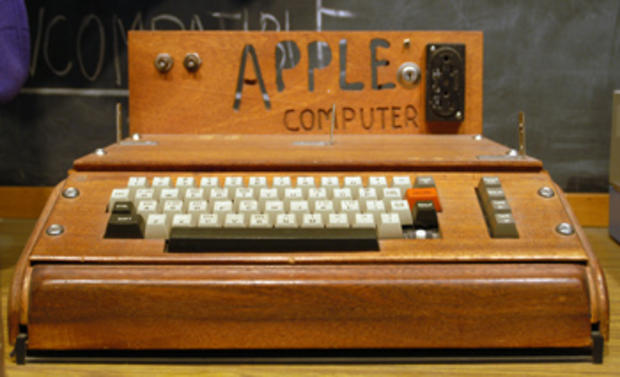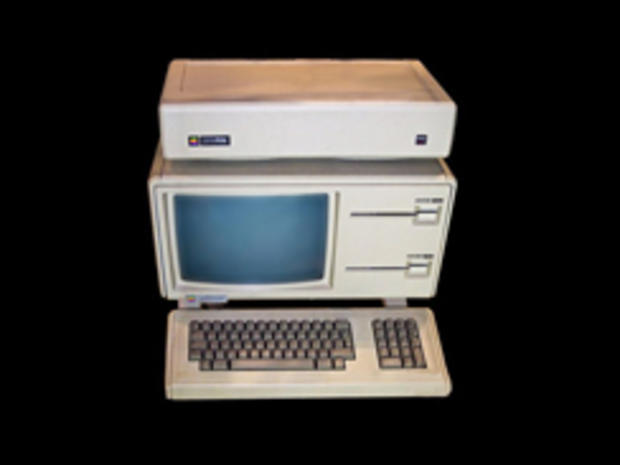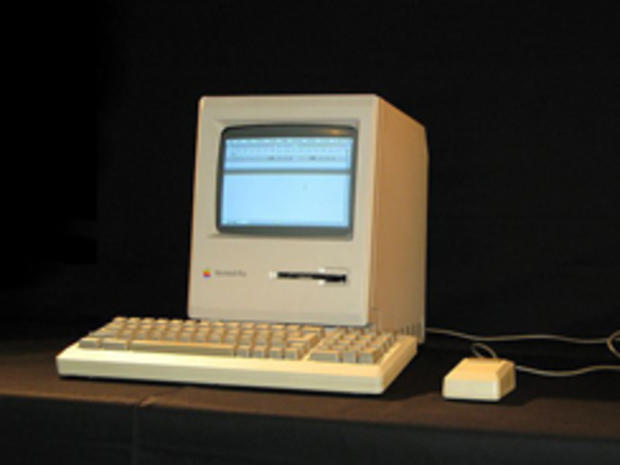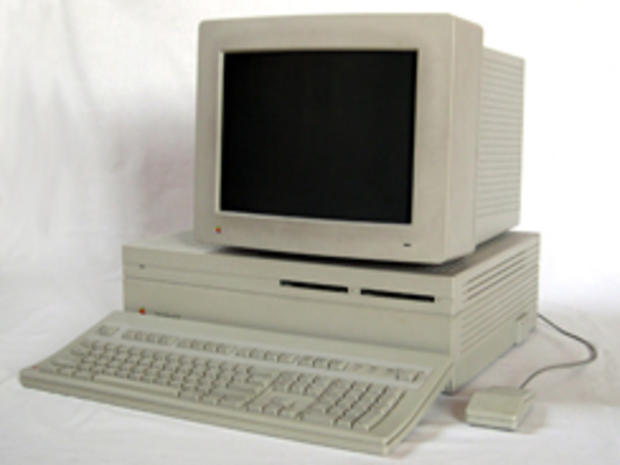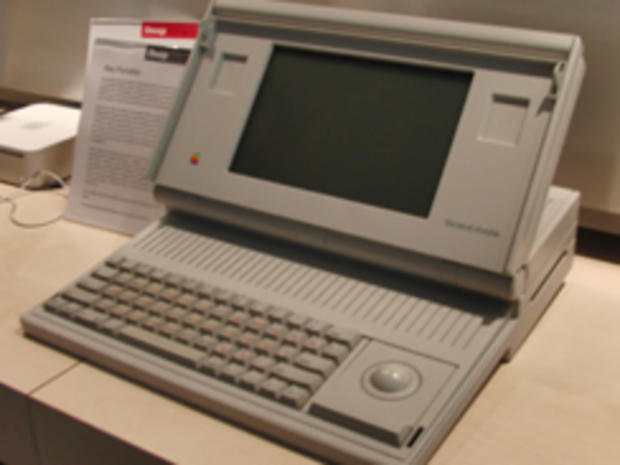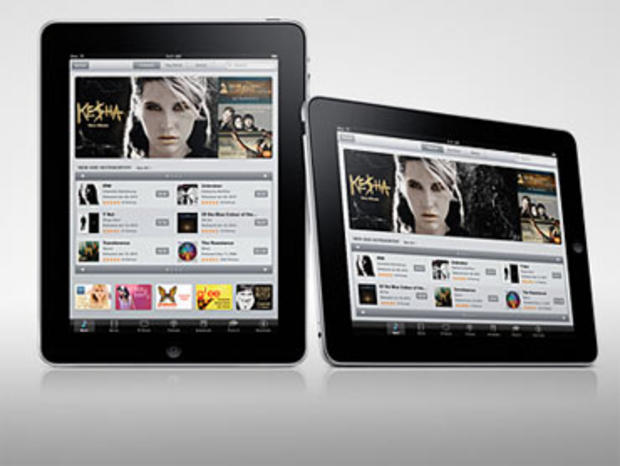Apple's most iconic computers
Over the past 30 years, Apple's (AAPL) products have reshaped industries and revolutionized the digital age.
In 1976, shortly after Steve Jobs and Steve Wozniak introduced the original Apple Computer at the Homebrew Computer Club in Palo Alto, Calif., a local computer dealer bought 100 hand-built, fully assembled Apple I computers for $50,000. That seed has since blossomed into the world's most valuable company, with a market capitalization approaching $500 billion. Apple has arguably had an even larger impact on the look and feel of technology, with an aesthetic that traces back to the Bauhaus and mid-20th century German industrial design.
Here, we look back at some of the iconic electronic company's most groundbreaking devices, from the original Apple I to the iPad.
Apple's most iconic computers
Apple I
The "original Apple Computer" was first introduced in 1976 at the Homebrew Computer Club in Palo Alto, Calif. Hand-built by Apple co-founder Steve Wozniak, the all-in-one personal computer kit included no monitor, keyboard, or mouse, though once hooked up to the necessary accessories it was able to process and display 60 typed characters per second, an output sixfold to that of then-standard teletypes. Wozniak and Jobs produced and sold roughly 200 models, each of which carried a sticker price of $666.66. Wozniak said he chose the repeating numbers because "it was just an easier way to type" the price tag.
Photo courtesy of Ed Uthman via Wikimedia Commons
Apple's most iconic computers
Apple II
Apple Computer released its second model, Apple II, in 1977. It had built-in audio speakers and color graphics compatibility, and was the first to brandish Apple Computer's iconic rainbow logo. Wozniak said many of the features that made Apple II stand out were added only because he had taken on the "pet project" of designing Breakout, a video game by Atari, and wanted to "show it off at the club." Apple II broke out roughly six months after the company incorporated itself as Apple Computer. That name stuck until Jan. 6, 2007, when Jobs unveiled the iPhone at the Macworld Conference and Expo and announced that the company was formally changing its name to Apple.
Photo courtesy of Devin Cook via Wikimedia Commons
Apple's most iconic computers
Apple Lisa
Lisa, which launched in 1983, was the first personal computer equipped with a graphical user interface. Jobs took part in the early stages of Lisa's development, which began in 1978, though six years later he was shooed out of the project and joined the Macintosh development team. The GUI-based Lisa was supposed to appeal individual business owners, though the $9,995 price tag didn't help. The company sold only 10,000 units. According to legend, Apple Computer buried its excess stock of Lisas in a landfill in Utah.
Photo courtesy of Rama via Wikimedia Commons
Apple's most iconic computers
Macintosh 128k
Apple Computer introduced the Macintosh in 1984, most notably in a now-famous commercial by movie director Ridley Scott that first aired during Superbowl XVIII on CBS. The scene depicts a twisted take on "1984," the classic novel by George Orwell in which the protagonist faces off against a dictator who spies on and subjugates people using state-of-the-art electronic devices.
The original Apple Macintosh had 128KB of built-in memory.
Photo courtesy of Grm wnr via Wikimedia Commons
Apple's most iconic computers
Macintosh Plus
Introduced in 1986, the Macintosh Plus was the third personal computer in the original Macintosh line and the first to run System 7 OS, a GUI-based operating system that featured virtual memory, file-sharing, and QuickTime. Mac Plus came with 1MB of RAM, though the memory could be expanded to 4MB.
Photo courtesy of Rama via Wikimedia Commons
Apple's most iconic computers
Macintosh II
Apple Computer introduced the second series of Macintosh models on March 2, 1987, the same day it released Macintosh SE, whose internal drive bay and "System Expansion" slot marked significant improvement to its predecessor, Macintosh Plus.
Mac II was the first Apple computer to support a color display. It sold for an introductory price of $5,500, nearly twice the cost of the Macintosh SE.
Photo courtesy of Alexander Schaelss via Wikimedia Commons
Apple's most iconic computers
Macintosh Portable
Apple launched its first battery-powered computer on September 20, 1989. The Macintosh Portable included a built-in track ball and an "instant on" low power sleep mode. It weighed about 16 pounds, cost about $400 a pound and was the first computer to send an email message from space.
Photo courtesy of Flickr user Vokabre
Apple's most iconic computers
Power Macintosh 6100
Apple Computer introduced the Power Mac in 1994. The 6100 series, also know as the Performa 6100, featured the PowerPC RISC type processor inside Centris 610's slick "pizza box" low-profile case. The model introduced Apple's iconic "chimes," which replaced the harsh "bong" sound played by earlier models on start-up.
Photo courtesy of CNET
Apple's most iconic computers
iMac G3
After Jobs proclaimed himself "interim CEO" of Apple in 1997, two of his first significant decisions were cooling the company's rivalry with Microsoft (MSFT) and trimming down Apple's wide range of desktop Macs.
The iMac G3, which introduced an all-new fleet of Macintosh, was an egg-shaped machine available in a variety of translucent colors and shipped with a keyboard and mouse. It featured dual headphone jacks, built-in stereo speakers, and a build-in handle. It was also the first personal computer to include USB ports as standard hardware.
Apple's most iconic computers
iPad
Apple released its first iPad in April 2010. While some experts expressed doubts that consumers would show much interest in tablet computers, the product was an immediate hit, selling more than 3 million units within three months of its introduction in the U.S. "It feels great to have the iPad launched into the world -- it's going to be a game changer," Jobs said in a statement at the time.
The original iPad retailed for $499 for a 16GB model, $599 for 32GB, and $699 for 64GB. The third-generation iPad, which Apple unveiled today, features a sharper screen and a new chip with four processing cores, allowing smoother graphics. Said Tim Cook, Jobs's successor as CEO, "We are taking it to a whole new level and are redefining the category that Apple created with the original iPad."

